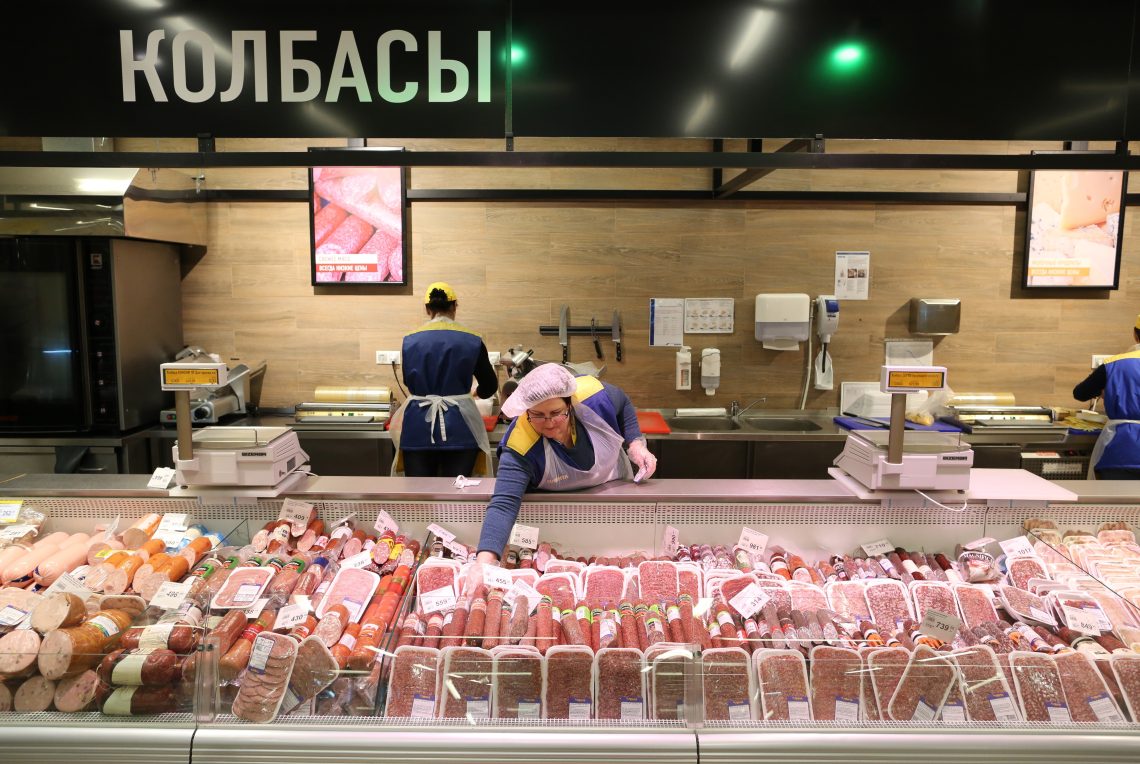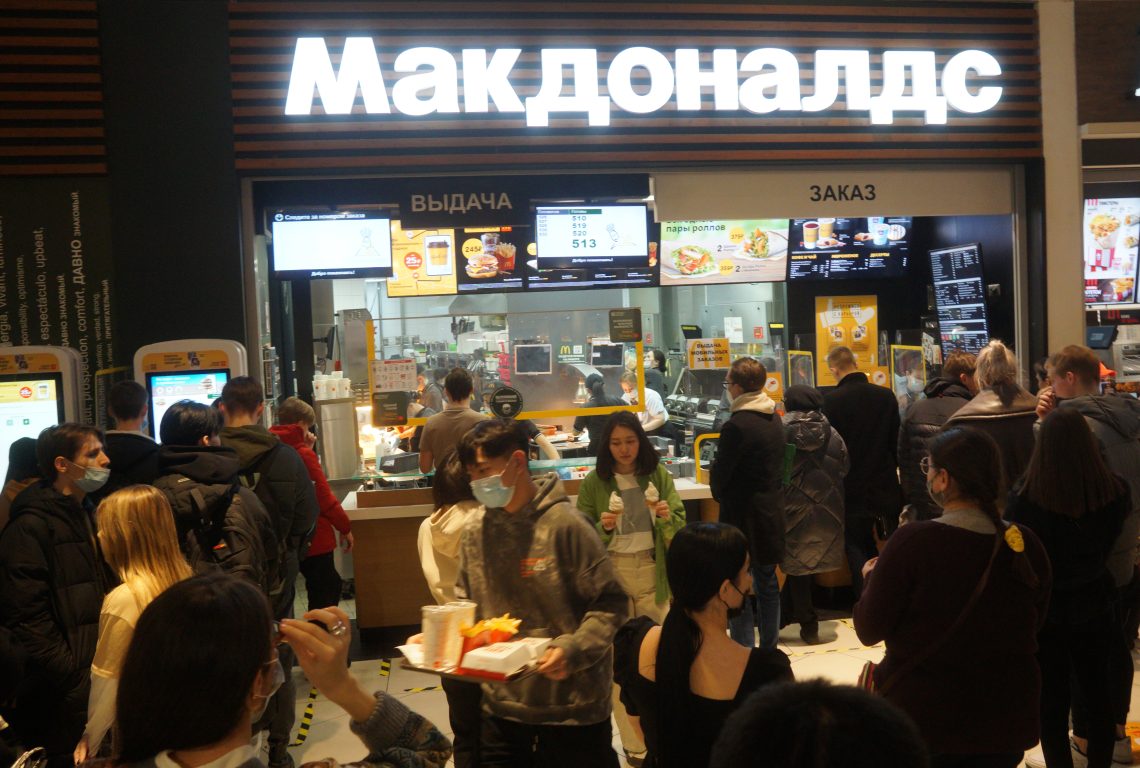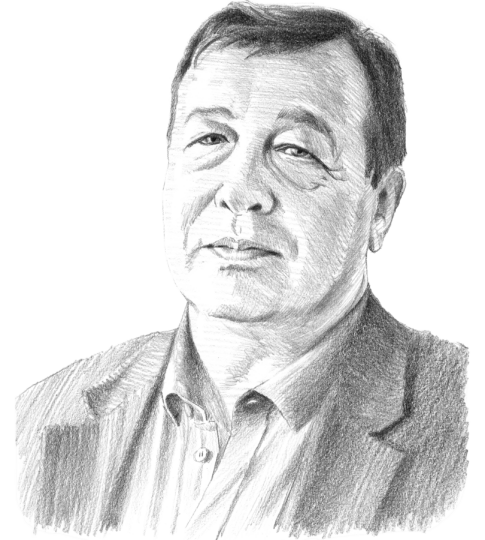Russia under sanctions
While sanctions have not brought an end to the war in Ukraine, they will still have a devastating impact for Russian citizens.

In a nutshell
- Russia is facing unprecedented sanctions
- Citizens have already begun adapting to new realities
- The full impact will be felt toward the end of 2022
In March 2022, Russia became the world’s most sanctioned country. It is subject to more than 5,000 different targeted sanctions, more than Iran, Venezuela, Myanmar and Cuba combined.
With 1,194 sanctions against Moscow, the United States is the leading sanctioning country, followed by Canada (908) and Switzerland (824).
Of restrictions against the financial sector, the most significant is the freezing of half of Russia’s gold and foreign exchange reserves stored in the West – $300 billion. It is now forbidden to export dollar and euro banknotes to Russia, along with several other currencies. Several Western countries have suspended the services of Russian banks’ branches operating on their territory, and the leading Russian banks have been disconnected from the SWIFT system.
The West is also moving toward an embargo on the import of mineral resources from Russia. By the end of 2022, the U.S. and most European countries will likely stop buying Russian oil and coal. Dependence on Russian gas imports is also gradually decreasing.
Consumer expectations have changed significantly since late February 2022.
Sanctions against individuals were introduced. The entirety of the Russian ruling elite has been targeted, starting with President Vladimir Putin, members of the government and deputies of the State Duma, as well as almost all major Russian businesspeople. Heads of state-controlled television channels have also been sanctioned.
In addition to these measures, many non-state actors are also boycotting Russia. For example, several hundred companies refused to continue working in the country, including giants like McDonald’s, Coca-Cola, KFC, BP, and Shell. And the trend continues.
How are sanctions affecting the economy?
The most obvious losses were in the air transport sector. Russian civil aviation is facing unprecedented bans. Almost half of the world is closed to the flights of its fleet. Foreign lessors have recalled their aircraft. Insurers from abroad are terminating contracts. Manufacturers of Western aircraft are no longer performing maintenance for Russian-owned planes. In January 2022, Russian airlines transported 8.1 million passengers; in March – only 5.2 million. At the largest airports, staff are being let go and terminals are closing.
Another area where the effect of sanctions has already clearly manifested itself is the automobile industry. Almost all automobile plants in Russia produce cars either under a foreign brand or using foreign components. As a result, in April there were only two fully functioning car assembly plants. The rest have either switched to part-time work or stopped.

Oil production has begun to decline. In April 2022, Russia reduced its production by almost 9 percent compared to March.
Inflation is rising sharply. Only in March 2022, the consumer price index increased by 7.6 percent compared to February. Inflation by the end of 2022 is expected to hit 20 percent, according to a survey of experts conducted by the Central Bank of Russia.
The country’s central bank also forecasts that the economy will really begin to feel the effects of sanctions at the end of the second quarter and during the third quarter of this year. Chairwoman Elvira Nabiullina said in April that from then on the Russian economy could temporarily exist on reserves, but they would eventually run out and then structural transformation and “the search for new business models” would begin. What this means, no one can say yet. Much depends on the military situation in Ukraine.
How is the population coping?
According to official data for the first quarter of 2022, real incomes of the population decreased by 1.2 percent compared to the first quarter of 2021. In the meantime, the Russian government has stopped publishing monthly data on real incomes. Therefore, it is safe to assume that this indicator stopped growing after the beginning of the invasion of Ukraine.
Consumer expectations have also changed significantly since late February and early March 2022. More than half of Russians (65 percent) already had a decrease in income in March, while 64 percent reduced expenses and 33 percent bought food and other goods for the future. More than half of the respondents (66 percent) are experiencing difficulties with work.
An enormous majority (94 percent) of respondents noticed an increase in prices, especially for products and other goods of the basic consumer basket: clothes and shoes, medicines, furniture and goods for children and animals. According to the majority (88 percent), the economic situation has worsened, especially affecting people with low incomes.
The standard of living of the majority of the population will significantly decrease. Wartime laws will be introduced. Russia will turn into a besieged military camp.
Russians report reducing their spending in the following areas: eating out – 64 percent, travel – 57 percent, leisure (cinema, theater) – 50 percent, home renovation – 47 percent and furniture – 46 percent. They are also spending less on hobbies, alcohol, cosmetics and beauty treatments. Spending on clothing has been reduced by 40 percent and on groceries – by 30 percent.
According to official data, unemployment levels in March 2022 were fairly low: 4.1 percent according to the methodology of the International Labour Organization. Assuming that the economic situation in Russia will worsen due to the sanctions imposed, then this indicator will probably grow, but only slightly. The Russian labor market, upon the onset of economic difficulties, reacts not by releasing staff, but by reducing wages or hours. This is due to the attitude of the authorities, which fear a sharp surge in unemployment triggering widespread protests. This method of reducing workers’ incomes while maintaining semiformal employment was already used in Russia in the 1990s, during the economic crisis of 2008-2009 and the lockdowns of 2020-2021.
Fear of mass unemployment runs deep in Russian society, and dates back to Soviet times. Younger generations may not feel these anxieties, but their share in the Russian labor market is not yet so large as to change mainstream practices.
Scenarios
Under a pessimistic scenario, the war will continue over the next few months and the West will impose an oil embargo – and perhaps, partially, a gas embargo as well. This will lead to a sharp decrease in foreign exchange earnings to the budget, and the state will have great difficulties fulfilling its economic and social obligations. In fact, an economic emergency will be introduced in Russia, which implies the abolition of even such basic market institutions as freedom of pricing, independence of not only large, but also medium-sized and small businesses. The state will have to micromanage almost all economic activities. There will also be shortages of many basic consumer goods.
The standard of living of the majority of the population will significantly decrease. Wartime laws will be introduced. Russia will turn into a besieged military camp.
In a less pessimistic version, military operations will soon lead to a truce (possibly according to the model of North and South Korea), leading to roughly the same “besieged fortress” phenomenon in Russia. In this scenario too, the economy would become more primitive and focus only on supporting military production.
In an optimistic scenario, a mutually beneficial peace treaty between Ukraine and Russia could be concluded. But for this, there would have to be tectonic shifts in the leadership of the country. In this case, the pressure of the sanctions would gradually ease, and the economy could resume its growth and normal functioning.
As of May 2022, the second scenario appears the most likely.








